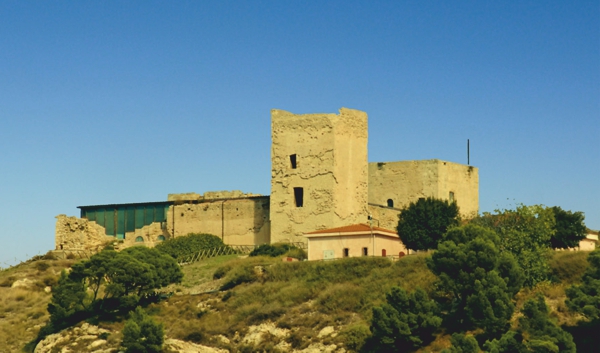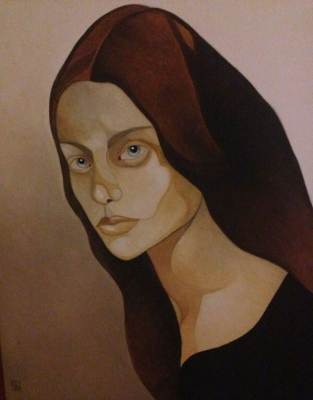The castle of Saint Michele
History and legends about the castle of Carroz
Like Rome, Lisbon and Istanbul, Cagliari, too, is built on seven hills. A coincidence that, although it does not give the same importance to these cities, adds to its charm. One of the hills is that of San Michele. It is named after the homonymous district. However, the district of San Michele in Cagliari has a jewel that stands nestled on the hill: The castle.
Today the castle has an excellent condition compared to the state of abandonment in which it poured a few decades ago. A beautiful green park, full of plants and trees, with a breathtaking 360 degree view of the city and beyond. The structure has been properly restored and delivered to the citizens in satisfactory condition. Meeting place, art galleries and cultural events in general, is a successful example of a re-evaluation of the place and its history.
Massimo Rassu and Antonello Serra have dedicated an interesting and enjoyable book to a symbol of our city, a great historical heritage of great interest.
Those who are taking the road that leads from the island the chief town, for several kilometers before reaching the target, can see the imposing outline of the castle, which in reality looks decently modest in comparison to other similar structures. In different strategic points of Cagliari, sharpening the view, you can glimpse it standing proud.
Only few people know its history. The authors of the above quoted text have precisely, in detail and with wise simplicity, described as historical documents and archaeological studies have testified about its construction.
The complex has a rectangular shape, consisting in three quadrangular plan intact angular towers. It was built on the ruins of a Byzantine church, in turn built near the ruins of a monastery dedicated to St. Michael. The historians of the past handed down the original building, the convent, it had belonged to the Carthusian monks. During the domination of Pisa, the building was built on the church and on what remained of the structure of the convent. Canon Spano passed on about a solemn celebration which was celebrated on September 29, the feast of St. Michael the Archangel, until the Nineteenth Century, in a chapel later incorporated into the structure through the work of a restructuring.

You might believe that the church of St. Michael had been built by the iconoclastic heretic Arsenio; however, it is not sure, because this is just a guess that can be based on some news shortly. There are many places of worship which at various times have been dedicated to St. Michael the Archangel.
It can be assumed that on the hill, during the Roman domination, were present the cults of the gods, as it was for the hill of Sant'Elia, where was the temple dedicated to the goddess Ishtar; was this the place of worship of the god Asclepius? In the Byzantine tradition, the cult of this minor deity, protector of medicine and able to raise the dead, was replaced by the figure of St. Michael. The building, although built by the Pisans, suffered significant architectural influences of Aragonese style.
As it would be interesting to dwell on the changes suffered during the long years of history of this beautiful monument, but it might look inappropriate in front of the good work done by Rassu and Serra.
It is interesting that the castle was inhabited by a sort of Don Rodrigo as the one described by Manzoni.
In 1325 Berengario Carroz, longa manus of the Emperor of Spain Alfonso, received the hill of San Michele as feud; in little time the feudal lord dismantled the church and the convent to consolidate the whole building, that finally assumed the shape of a real fortified manor. The building became his home, it was decorated with precious objects including what was plundered from St. Saturno basilica. In 1331 the fortress was completed and with the family Carroz, lived there all those criminals whom Berengario granted asylum; including murderers, robbers and those who were guilty of crimes against those who were political opponents of the noble Spanish or who it was against him for any reason. The authorities of Cagliari opposed and challenged hardly the work of the Carroz, that abusing the privileges granted by the Emperor of Spain, were laying down the law in the city. The issue was resolved with the granting by the Spanish crown extradition to those who had enjoyed the protectorate of Carroz.

The castle was then a refuge for "braves" and for those who want to free themselves from justice behind the pledge of allegiance to the feudal lord.
Like all castles, also this should have a ghost. Some say that the specter of the bloody, albeit unfortunate, Violante Carroz, stroll the lush park below the fortress and that it appears in the rooms of the castle. However, we know that the ghost of the Countess or Marquise (some favors one, some the other), of Quirra is already busy to infest the ruins and the rooms of the Convent of San Francesco in Stampace, now incorporated into business premises and private homes. Perhaps a case of bilocation?
Like all castles also that of St. Michael has underground tunnels that lead from the hill to nobody know where. This is not an oddity; indeed, the whole Cagliari is dotted with underground tunnels that create a city parallel to the surface.
Archive documents of the Inquisition were found acts of proceedings against the priest Pietro Demontis, chaplain of the Brotherhood of the Souls of Purgatory of the parish of San Giacomo of Cagliari. The charge is that the prelate, in the early 1700s, has sought a treasure that was hidden in the castle. The treasure hunt was carried out through a ritual called "afromancy" or "hydromancy", consisting in the invocation of the devil, kneeling in front of a bottle of water placed over the vestments and reciting special incantations.
We do not know if the chaplain was looking for a treasure in particular, of which he had the clue to the existence, because the ritual that had sentenced him was a practice used in general to search for treasures that, at the time, were believed to be stored in the subsoil by ghosts.
Surely some ghostly presence will be present, but we recommend a visit to find out that in addition to reading the book dedicated to it, no doubt it will be interesting from several points of view.
Castello di San Michele
Cagliari, Via Sirai
Tel. and fax: +39 070 500656 cell. 3466673657
e-mail: castellosanmichele@camuweb.it
time: Tuesday to Sunday from 16 to 20 Monday: closed